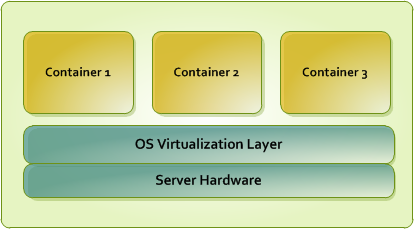Basics of OS Virtualization
The OS virtualization allows you to virtualize physical servers on the operating system (kernel) layer. The diagram below shows the basic architecture of OS virtualization.

The OS virtualization layer ensures isolation and security of resources between different Containers. The virtualization layer makes each Container appear as a standalone server. Finally, the Container itself houses its own applications and workload. OS virtualization is streamlined for the best performance, management, and efficiency. Its main advantages are the following:
- Containers perform at levels consistent with native servers. Containers have no virtualized hardware and use native hardware and software drivers making its performance unbeatable.
- Each Container can seamlessly scale up to the resources of an entire physical server.
- OS virtualization technology provides the highest density available from a virtualization solution. You can create and run up to 100s of Containers on a standard production physical server.
- Containers use a single OS, making it extremely simple to maintain and update across Containers. Applications may also be deployed as a single instance.
|
|
 Feedback
Feedback
|